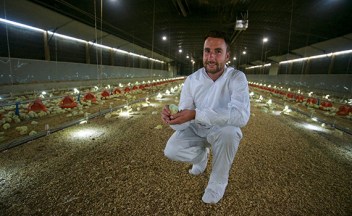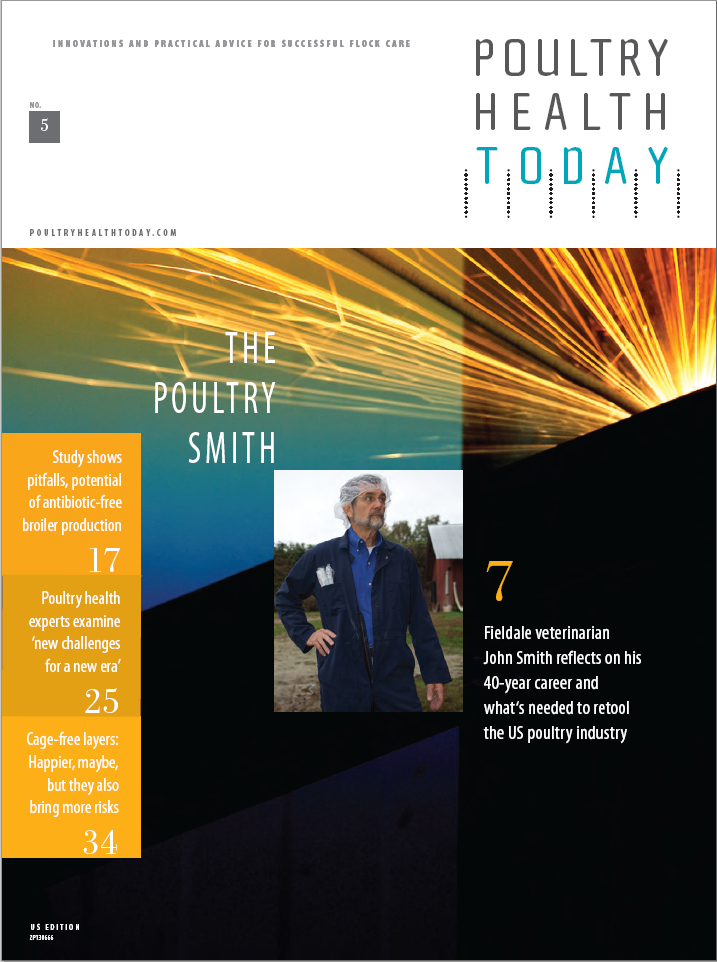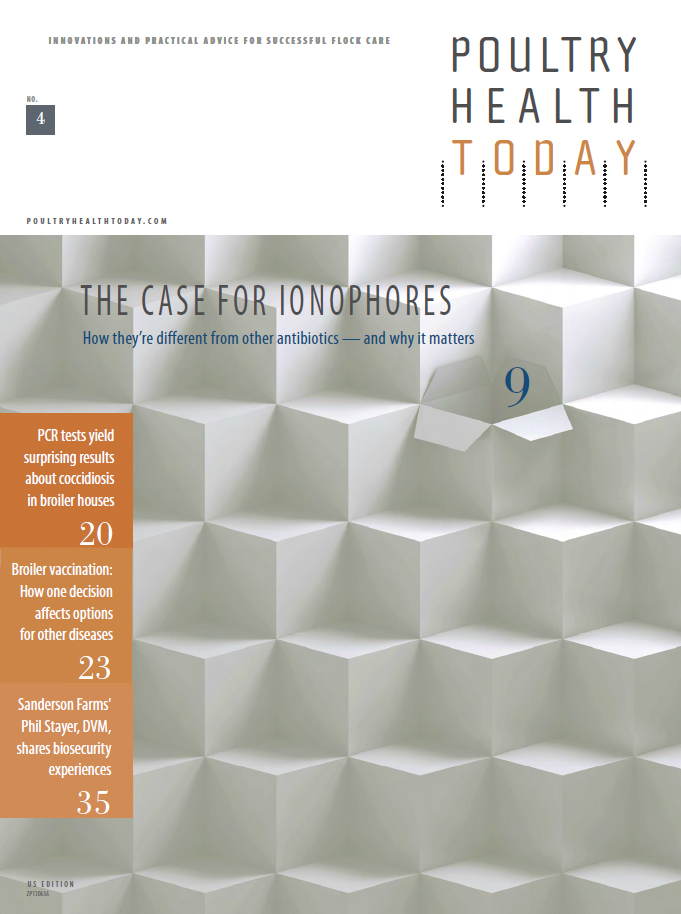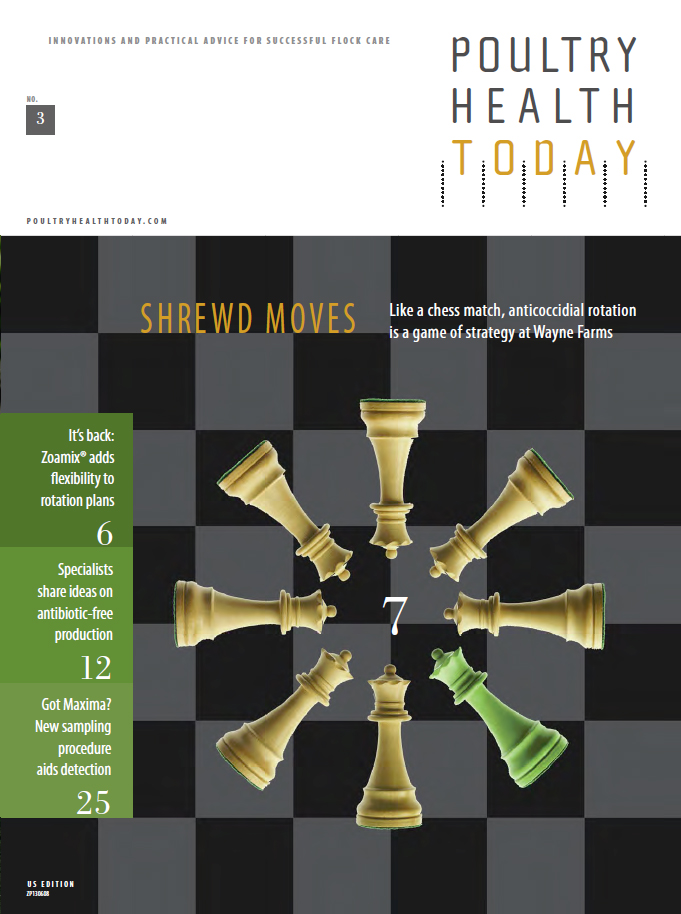

5 ABF health tips from Miller Poultry

Miller Poultry — an Indiana-based producer with more than 15 years’ experience raising broilers without antibiotics — offers these tips for ensuring a strong, healthy and efficient bird:
Miller Poultry now exclusively raises Aviagen Ross 708. While the line has a reputation for being a “big-bird breed” that requires more nutrients than other lines, they seem to have fewer leg problems — a common trouble spot in ABF production — and a higher yield at processing, according to live operations director Stephen Shepard.
Side note: Miller Poultry currently buys all of its hatching eggs but will begin producing a portion of its own breeder pullets and eggs in 2017 — a move that Miller Poultry’s veterinary consultant Armando Mirande, DVM, thinks will further ensure healthy ABF and organic broilers.
Coccidiosis and necrotic enteritis (NE) are their biggest health challenges. To help prevent coccidiosis — a prerequisite for managing NE — Miller Poultry leans on vaccines all year long for its organic birds. For the ABF flocks, vaccines are restricted from the end of April to early September. Ionophores are not permitted in ABF production. So, when coccidiostat pressure increases in the cooler months, the company manages the ubiquitous parasitic disease with ABF-approved coccidiostats such as decoquinate (Deccox), nicarbazin (Nicarb) and the latest entry to the field, zoalene (Zoamix), as needed.
“So far we’ve had a lot of success with Zoamix, with good posting results,” Shepard reported. “What’s intriguing about Zoamix is that although it’s a coccidiostat, it acts sort of like an ionophore. We’ll see some leakage, which is good because you get an immunity benefit.”
Not wanting to burn up the traditional coccidiostats, which have been known to develop resistance when used for extended periods, Shepard said they plan their coccidiosis-management regimens 3 years out with the goal of developing a 5-year plan.
“We don’t have a lot of tools at our disposal, so it’s important to be good stewards of the anticoccidials,” he added. “We keep a very, very detailed spreadsheet of every additive that goes into the feed, as well as our vaccination program.”
Looking to further improve 7-day starts, Miller Poultry is experimenting with LED tube lights along the water and feed lines, making the inside of a dimly lighted broiler house look like an airport runway at night. The lighting, Shepard says, attracts the birds and ensures good feed and water intake.
Not wanting any disease pathogen to get too comfortable, Shepard is a firm believer in “rotating everything” — not just feed medications but also some vaccines.
For example, Miller Poultry was a big user of a recombinant vaccine for Marek’s disease and infectious bursal disease (IBD). In recent years, however, they’ve been rotating in traditional live IBD vaccines to get better protection against shedding — a known shortcoming with continuous use of recombinants.
“When we first started using the recombinant IBD vaccine, it was a homerun,” Mirande added. “Great bursas, everybody loved it. But after 1½ or 2 years, the honeymoon was over. We found that if we substituted it with a less expensive IBD vaccine for 6 months or so, the recombinant IBD was effective again.”
The veterinarian added that while maintaining healthy bursas was important in any production system, it was especially critical for ABF operations to help optimize immunity.
One other benefit to rotating IBD vaccines: Because producers are limited to using only one HVT (herpesvirus of turkey) recombinant vaccine, resting the Marek’s/IBD recombinant vaccine also gives Miller Poultry the option of using a recombinant vaccine for either Newcastle disease or infectious laryngotracheitis (ILT), if needed.
“We haven’t had to vaccinate for ILT in the past, but we’re getting a heavy amount of layers all around us, all cage-free, and I think we’re going to have to start vaccinating for ILT in the future,” Shepard said.
Another big plus has been vaccinating year-round for Escherichia coli. That’s common practice in the industry for broiler-breeders and layers, Shepard said, but E. coli also can be major in broilers once the hatchery antibiotic has been eliminated.
E. coli typically emerges in broilers as a secondary infection to infectious bronchitis virus or reovirus, he explained, and can lead to high numbers of condemnations in the processing plant when birds are harvested at around 5 pounds. (see E. coli infection: Two types in broilers.) Miller poultry administers the E. coli vaccine at day 1 via hatchery spray, sometimes in combination with a coccidiosis vaccine.
“I’m a strong believer in the E. coli vaccine for broilers. Before vaccinating, we had a lot of E. coli showing up at the plant, mostly as sep/tox (septicemia/toxemia),” he said, referring to E. coli, staphylococcus and other organisms that can cause lameness in birds.
More Issues

















